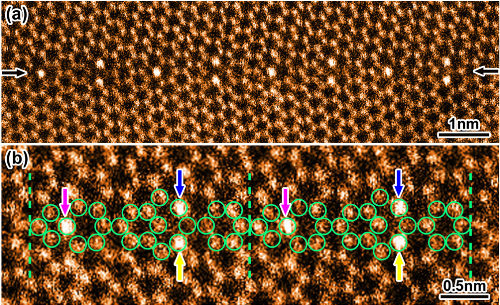Atomic Structures and Properties of Ceramic Interfaces Combination of Cs-corrected STEM and First Principles Calculations
Yuichi Ikuhara1,2,3
1 Institute of Engineering Innovation, the University of Tokyo, Tokyo 116-0013, Japan
2 Nanostructures Research Laboratory, Japan Fine Ceramics Center, Nagoya, 456-8587, Japan
3 WPI Advanced Institute for Materials Research, Tohoku University, Sendai, 980-8577, Japan
Grain boundaries and interfaces of crystals have peculiar electronic structures, caused by the disorder in periodicity, providing the functional properties, which cannot be observed in a perfect crystal. In the vicinity of the grain boundaries and interfaces around the order of 1 nanometer, dopants or impurities are often segregated, and they play a crucial role in the material properties.We call these dopants “function providing elements”, which have the characteristics to change the macroscopic properties of the materials drastically.In this study, we focus our attention on grain boundaries and interfaces of various ceramics, to which “function providing elements” are doped, and introduce the latest results of the microstructure analyzed in detail by Cs-corrected STEM. The results obtained for ZnO, Al2O3, Au nanoparticles on TiO2, BTO superlattice and Li related crystals will be shown in this presentation. Furthermore, the mechanism of the “function providing elements” are analyzed by the first principles calculation based on these observation results.

Fig.1 (a) HAADF STEM image of a Pr-doped ZnO ∑49 GB. Incident beamdirection and GB plane are parallel to [0001] and (3 8 0) of both crystals, respectively. Arrows show the position of GB plane. (b) Enlarged image with the framework structure of undoped ZnO GB, which is superimposed by green circles. Dotted lines show the periodicity along the GB plane. Colored arrows indicate the location of Pr atoms, in which three different colors show three different GB
References
[1] Y. Ikuhara, Prog.Mater.Sci., 54 ,770-791(2009)
[2] J.P.Buban et al., Science, 311 (5758): 212-215 (2006)
[3] N. Shibata et al,, Nature Mater., 8, 654-658 (2009)
[4] Y.Sato et al., Phys. Rev.Lett. , 97 (10): 106802 (2006)
[5] N. Shibata et al., Phys. Rev.Lett., 102(13),136105(2009)
[6]H.Ohta et al., Nature Mater., 6 (2): 129-134 (2007)
[7] S-Y Chung et al., Phys. Rev.Lett., 100 (12): 125502 (2008)
[8]S. D. Findlay et al., APL., 95, 191913 (2009)
Prof._Ikuhara_CV.pdf |



